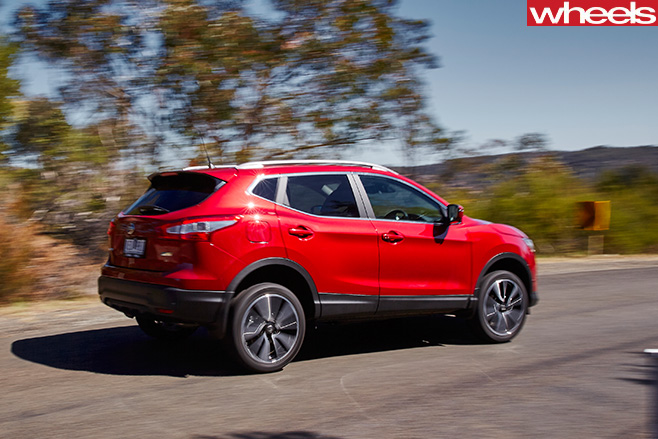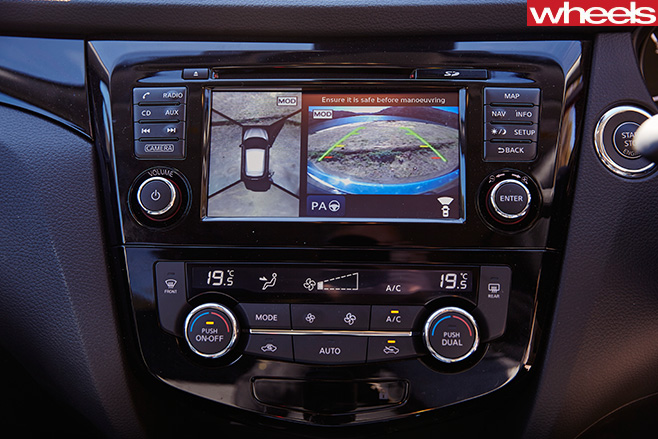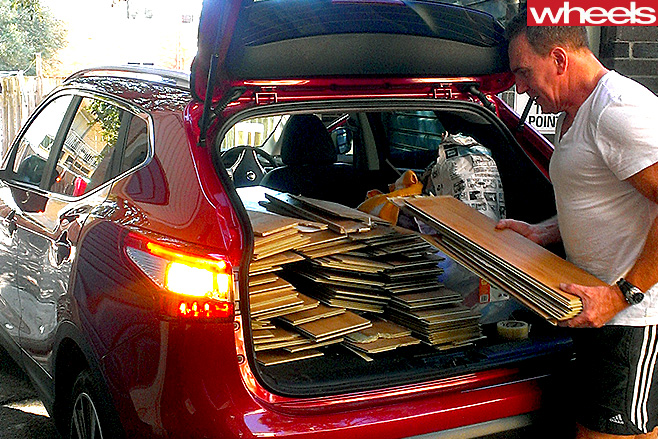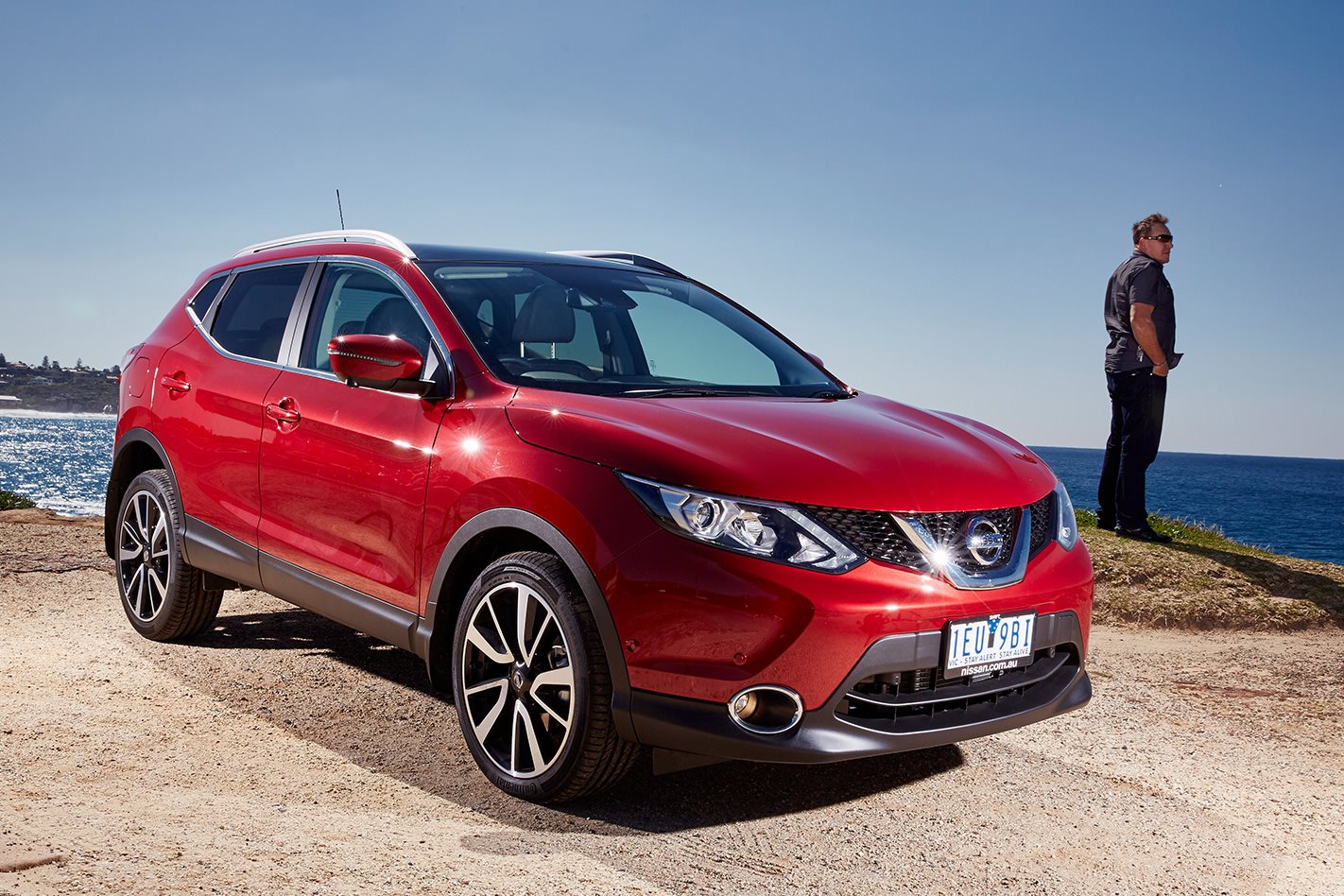Nissan Qashqai TS diesel long term review HERE
Part One: Changeover Issues
SOME clichés really irk me, so I tend to avoid them like, well, the plague. Such as the old line about having one’s cake and eating it, too. I think I understand the sentiment, but it’s still a pretty moronic expression.
Has anyone ever said to you, “Hey, please come over for my birthday party; we’ll eat, drink, dance, and best of all, there’ll be a cake! In a glass case, of course, purely for viewing purposes, because, you know, we can’t have our cake and eat it too…”

See, my recently departed oil-burner SUV was, if I can continue to torture the cake metaphor in powertrain terms, more like Rocky Road than whipped cream.
It was agreeably grunty in the mid-range, as modern turbo-diesels invariably are, but too loud and vibey at idle. Plus the power delivery was quite laggy, so throttle response, especially in heavy traffic, was a little lazy.
Enter the petrol Ti, and with it a whole new level of refinement. Its idle is a polished mechanical whisper, its throttle tip-in millimetrically perfect. Where the diesel and CVT transmission felt like an arranged marriage, the petrol engine and the same CVT feel more like soul mates united in blissful harmony.
There are no low-speed stumbles, no quarrels about whose turn it is to pick a ratio, take out the bins, etc.

It’s deceiving, but because there’s no lag and no surge, just a predictable and satisfying response to any sized throttle input, the petrol doesn’t feel gutless or hollow. It starts making torque progressively, rather than waiting for a bit then dropping a big wodge to the front wheels.
It also revs willingly, eagerly even, to where peak power resides at 6000rpm. So you never feel like a mechanical sadist by spinning it out to overtake or plug a gap in traffic. This petrol Ti is also about 100kg lighter than the diesel, and a second quicker to 100km/h, which are numbers that do help tell the story.
So there’s my cake; rich, creamy and satisfying. But where there’s cake, there’s consumption (except in clichés) and so it is with the petrol Qashqai.
Where the diesel was sipping in the mid-eights, my first measured tank of this thirsty bastard came in at 13.1L/100km, which admittedly included some hard driving for photography. Even so, it cruels the tank’s range from 700km or so to mid-400s; and is closing in on double the meaningless combined ADR figure of 6.9L/100km.
But if the bowser-wowser in me sucks it up, takes it on the chin and sees the glass as very much half full, I can skirt the clichés and say that me and the petrol Ti are as happy as fat kids with a slice of you know what.
Rock, unblocked
Regular readers who manage to suffer through my whinging and general first-world problem-mongering may recall that I moaned the base ST Qashqai’s sound system is right up there with a Taiwanese phone for sonic satisfaction.
Well, you get what you pay for, clearly. This top-spec model adds a decent amplifier and higher quality drivers and tweeters to transform the sound from gloopy to glistening. It’s not reference-grade but is sufficiently loud and engaging for my in-car garage parties to have resumed.
Nissan Qashqai Ti Price as tested: $35,490 Part 3: 468km @ 13.1L/100km Overall: 468km @ 13.1L/100km Odometer: 2342km Date acquired: August 2015
Part Two: Bang Or Bucks
According to popular wisdom, no-one buys base models anymore. It’s surely a more effective form of social suicide in certain suburbs of Australia than admitting you don’t have an Instagram account, or you buy non-organic kale.
But what about in the case of the Qashqai, where there are only two equipment levels offered? Does the lower-spec one actually count as a ‘base’ model? And is there real value in the top-spec job?
I should be well-placed to adjudicate, as I’ve spent three months in the entry-level Nissan Qashqai TS model, and am now high-falutin’ around in the top-spec Ti. If we were to ignore the engine change that came with this switch, the extra spend would be in the order of $6500.
So is it worth it? Honest answer – er, I’m not certain. It’s difficult to be definitive, as it depends much on where you place your priorities.
First up, cabin presentation. There’s no question the Ti is a nicer environment to slide into each day, with perforated leather seats and door panels, better trim treatment, and higher grade multimedia display.
Only the driver’s seat gets electric adjustment, which I rate as a borderline benefit, given that there’s no memory function and the manual controls in the ST (and passenger side) work well.

But probably the most obvious external indicator that you plumped for up-spec over entry level are the 19-inch wheels, seeing as they are a ‘plus-two’ jump over the ST’s 17s.
And yes, they do fill the arches more substantially and give the Qashqai a more solid stance. But the trade-off is that the absorbent ride of the ST goes out the window, replaced by a far more reactive, often jittery passage over typical Aussie roads. Maybe 18s would be a better compromise.
Then there’s Intelligent Park Assist, which sounds impressive, but I tried it once then quickly slapped myself. I may not be a drift god, but I do like to think I’m a reverse parker of reasonable competence. Plus I’m a male car enthusiast; why the hell would I hand parking responsibility over to a machine? How defeatist would that be?
Then there’s blindspot warning; nice to have, but not necessary if you own a functioning neck capable of 45 degrees of rotation. Likewise the lane-departure warning – it false-alarmed too many times in the first few days and has stayed switched off ever since. Sat-nav is occasionally handy, but the Around View camera doesn’t really add a practical advantage over regular parking sensors.
So the bottom line: while I’m a fan of the Ti’s slicker presentation, I’m not sure it’s brimming with a load of additional features I couldn’t live without. At least not $6500 worth.
Tall storage
Learning firsthand that your new Ferrari can’t accommodate a jumbo Slurpee would not, I’m guessing, be a deal-breaker for most owners. But SUVs need to play by a different set of rules, one where practicality and general liveability are often as important as performance.
The Qashqai stacks up well here, with generous, deep cupholders for front-seat occupants, door bins that can take full-sized water bottles, and very handy dual-level storage under the centre armrest.
Nissan Qashqai Ti Price as tested: $35,490 Part 2: 852km @ 12.9L/100km Overall: 1320 @ 13.0L/100km Odometer: 3194km Date acquired: August 2015
Part Three: Ride, Interrupted
I’m loathe to admit that some slightly colourful adjectives have been slung at the Qashqai in its last few weeks. Trust me, I don’t feel good about it.
The three-month ownership experience of this top-spec petrol Ti model has been largely very positive, so I do feel a bit harsh and churlish after I’ve muttered a few choice expletives in its general direction.
A large part of the issue is the main thoroughfare between my place on Sydney’s northern beaches and the city. It’s possibly one of the most annoying roads in existence since the driveway to Kyle Sandiland’s place was completed, and there’s no escaping its clutches.
It’s built from concrete slabs joined by expansion gaps, most of which have shifted and subsided over the years. It takes any car with marginal ride quality and turns it into a jolting, bump-thumping impact box that makes you curse the road builders who’ve clearly never been to Germany, the car’s suspension engineers and pretty much anyone else in earshot.
Part of my frustration stems from the fact that the base-model diesel Qashqai I spent the first three months in surfed over this road with well-isolated ease, blotting up the sharp edges with muted thuds that never intruded into the cabin.
It rolled on 17-inch wheels with chubby 65-aspect sidewalls. This top-spec Ti, as I’ve previously mentioned, runs 19-inch 45-series Continentals, and they’re clearly a step too far for anyone who regularly drives on anything short of billiard-table roads.
They also give the car a more heavy-footed feel, as if there’s extra unsprung weight hanging off each corner, and the suspension struggles to keep up over any stretch of lumpy and patched bitumen taken at suburban speeds.
The result is an incessant jiggling, hammering and steering shimmying that can be both intrusive and irritating, yet not evident on the base-model’s 17s.

Likewise, the packaging proved near perfect for my needs. With rear seats folded and the front passenger’s seat moved slightly forward, it swallowed my bicycle with no wheel removal required, and there was still ample room for an oversized gear bag and the usual other bits of crap I carry over the weekend.
The vast panorama roof’s blind was always requested to be open when my teenage daughter and her friends rode back there, with the consensus that it made the space, “like, way more airy… and stuff.” Even if bright sunlight did impact on the legibility of her smartphone, which now appears to be fused to the palm of her hand via an operation I don’t remember being told about.
The Qashqai’s slated replacement is a Hyundai Tucson, in diesel Highlander trim, no doubt promising lower consumption than the petrol Nissan, and hopefully, less conflict issues with Pittwater Road.

Rolling form over function
Several of Wheels’ more pragmatic journos have, over the years, written at length about how the steady increase in wheel size (and a corresponding drop in tyre sidewall) is buggering ride quality. Designers start their sketches with massive wheels filling the arches, while product planners and marketing types are only too happy to see big wheels on the options list, and fitted to cars in the showroom to sex up the offering.
Spare a thought for the suspension engineers who are expected to come up with a single spring and damper setting that works with tyre sidewalls ranging from bread-box high to liquorice strips.
These days, wheel diameters on some small cars can start at 15-inch, and top out at 18. Similar story, larger sizes for SUVs, most of which spend their lives trundling around suburbs and cities, rarely getting pushed anywhere near the limits of adhesion. So yes, big wheels/low-profile rubber are a fashion accessory that really can take a toll on liveability.
Nissan Qashqai Ti Price as tested: $35,490 Part 3: 789km @ 12.8L/100km Overall: 2109km @ 12.9L/100km Odometer: 3983km Date acquired: August 2015






